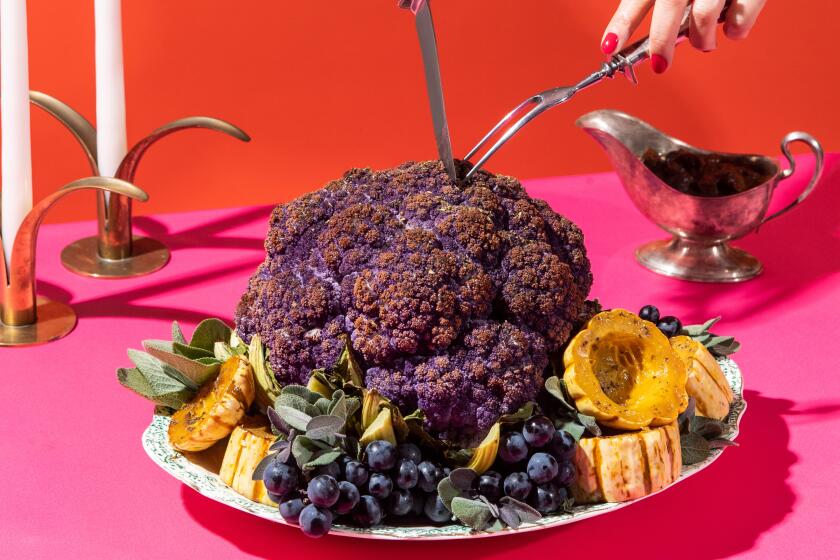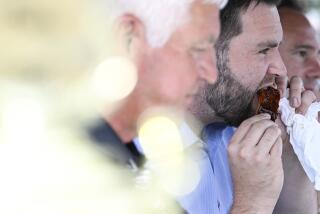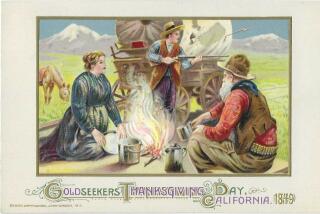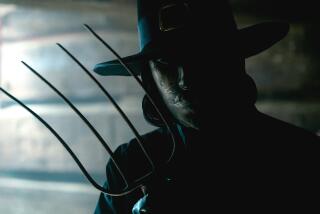Opinion: Mister Rogers was a Thanksgiving heretic
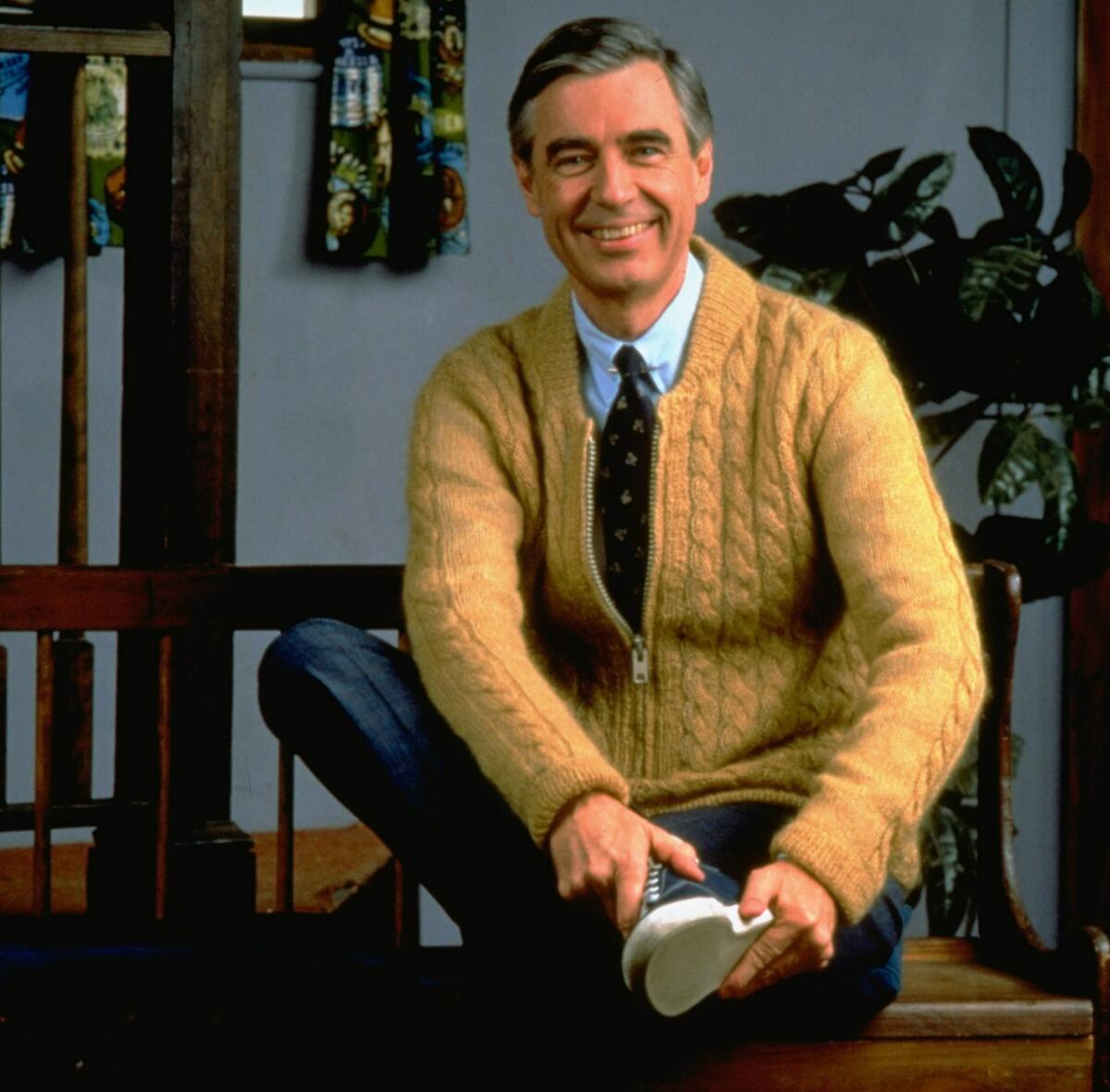
- Share via
Don’t jump to conclusions about the Thanksgiving release of “It’s a Beautiful Day in the Neighborhood,” the new film about Fred Rogers, America’s beloved TV neighbor. Mister Rogers and the hallowed tradition of eating lots of turkey simply do not belong together.
Rogers was far more inclined to pardon the Thanksgiving centerpiece than to gather around its roasted carcass. He saved his first turkey from the ax on “Misterogers,” a children’s program he created for the Canadian Broadcast Corp. in the 1960s. In one of that show’s Thanksgiving episodes, King Friday XIII — the imperious puppet who served as Rogers’ alter ego on “Misterogers” and on the PBS show “Mister Rogers’ Neighborhood” — invites a real baby turkey, an adorable little poult, to be a guest rather than the entree at his countercultural holiday table.
In the early 1970s, Rogers stopped eating turkey — and meat, fish and other fowl — altogether. It was right around the time that Frances Moore Lappé penned “Diet for a Small Planet,” a vigorous argument for vegetarianism. But unlike Lappé, Rogers was an ordained Presbyterian minister who used spiritual language to explain his commitment to a plant-based diet.
“I want to be a vehicle for God, to spread his message of love and peace,” Rogers said in a 1983 interview with Vegetarian Times. For Rogers, that could never mean beheading turkeys, breaking their wishbones or biting their legs. At the very least, it meant treating turkeys and all God’s creatures as worthy of care and compassion.
“I don’t want to eat anything that has a mother,” Rogers often said.
Of course, Rogers’ love for children also played a role in his choice to adopt a vegetarian diet. In the 1983 interview, he explained that when boys and girls “discover the connection between meat and animals, many children get very concerned about it.” With this in mind, he made sure his program didn’t include any images of people eating anything other than a vegetarian meal.
Here are the reasons why you should try a vegan Thanksgiving menu of classic dishes like sweet potato casserole and bread stuffing and tips that make it easy to pull off.
Human carnivores are even missing in footage from Rogers’ visit to a family restaurant during a weeklong series about food. Broadcast during Thanksgiving week in 1984, the five episodes feature Mister Rogers and his guests enjoying tofu, vegetables, fruits and nuts.
In another Thanksgiving detour, the portions on Mister Rogers’ vegetarian plate are modest. America’s popular sin — gluttony — makes no appearances in the Neighborhood.
And Thanksgiving Day with Mister Rogers isn’t just set aside to celebrate bounty, it’s also a day to remember that not everyone is equally blessed. The 1984 series highlighted the devastating effects of hunger with a goat that was so hungry it stole food from the Neighborhood of Make-Believe.
Rogers also told his young audience that week about a different kind of sustenance: “When a person is very, very hungry, he or she can’t think of other kinds of food,” he said. “But there are other kinds. Music, for instance, is food for the hearing. And painting and beautiful scenes are food for the seeing. And books are food for the soul. And loving other people is food for the spirit.”
The series concludes with Neighborhood residents sitting down to their Thanksgiving dinner with hungry friends from a nearby community. Rogers’ message is unmistakable: By sharing our bounty with those who have less, we help make it possible for them to live and love, to partake of the food for the spirit.
Rogers rarely mentioned his faith on “Mister Rogers’ Neighborhood.” As Joanne Rogers has said in recent interviews, her husband was concerned it might make some viewers in his audience feel excluded. In a 1974 Thanksgiving episode, however, he dared to offer a simple prayer: “Thank you, God, for food to eat, and families and friends to love.”
Families and friends to love — food for the spirit — was always the main dish on Mister Rogers’ holiday table, just as it was the underlying message, shared freely, every beautiful day in the Neighborhood.
Michael G. Long is an associate professor of religion at Elizabethtown College and the author of “Peaceful Neighbor: Discovering the Countercultural Mister Rogers.”
More to Read
A cure for the common opinion
Get thought-provoking perspectives with our weekly newsletter.
You may occasionally receive promotional content from the Los Angeles Times.
